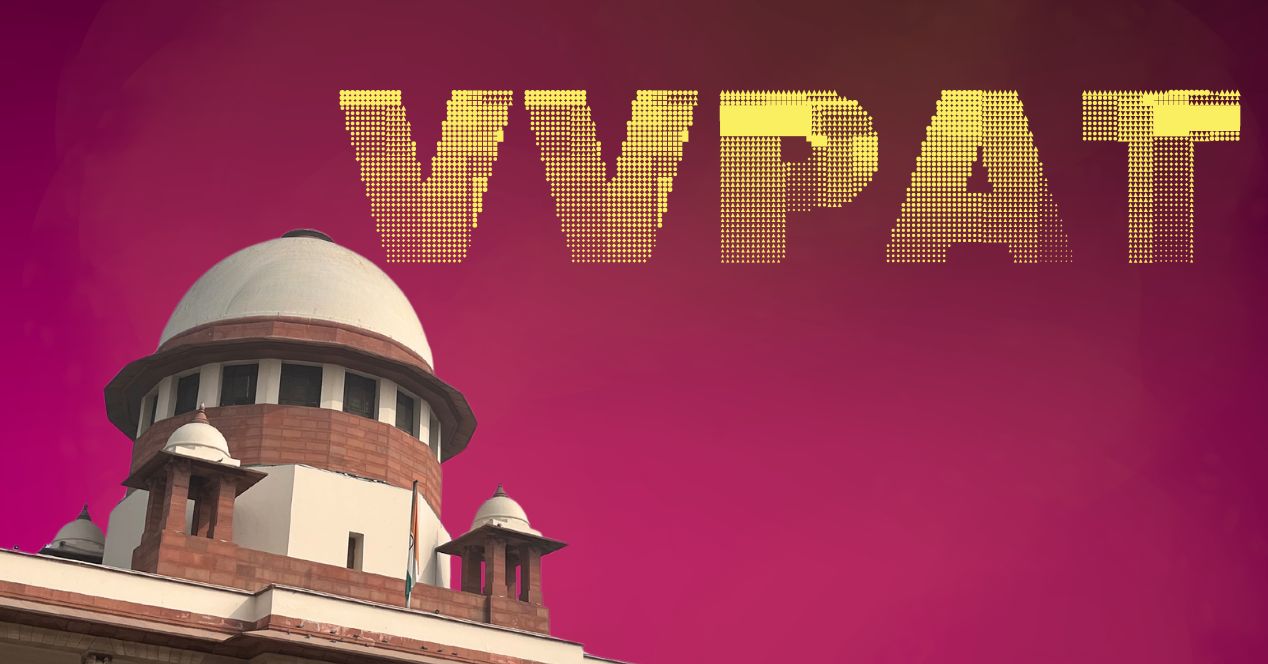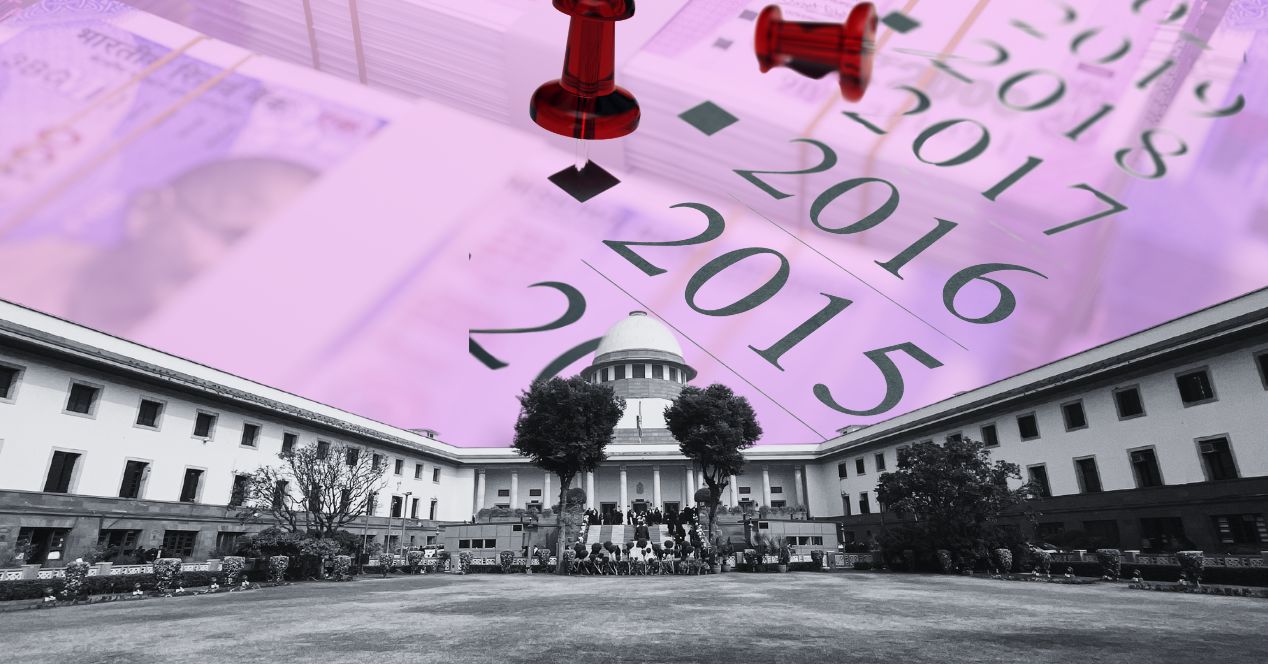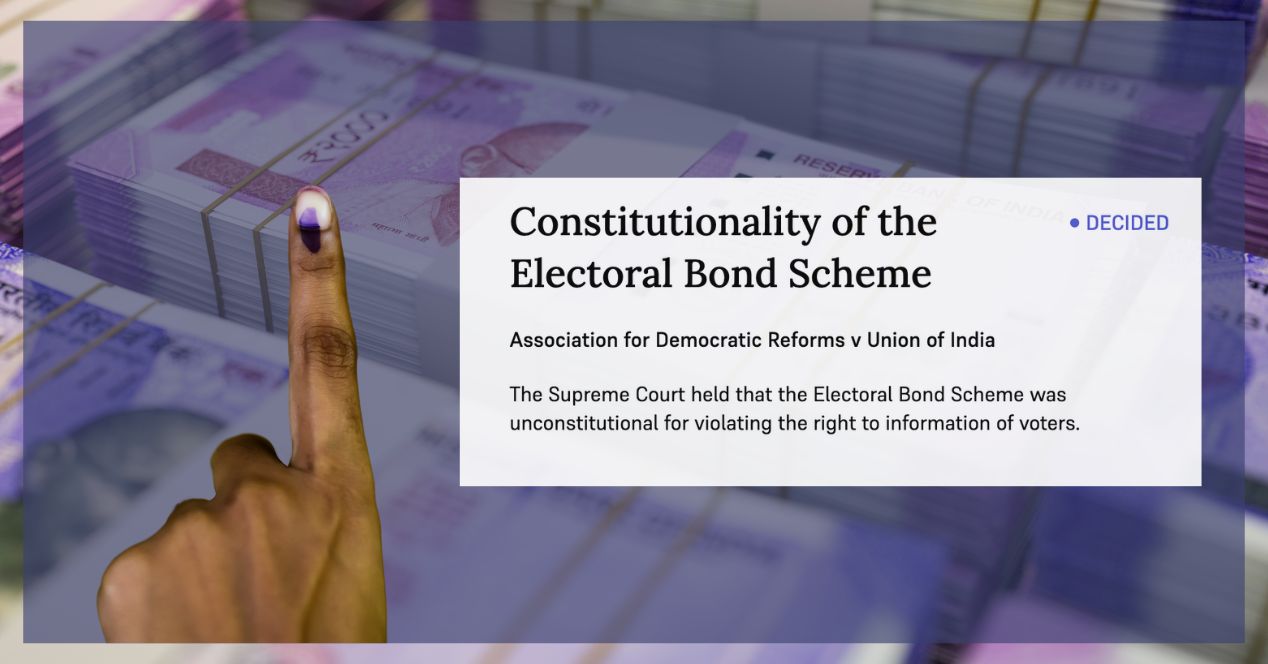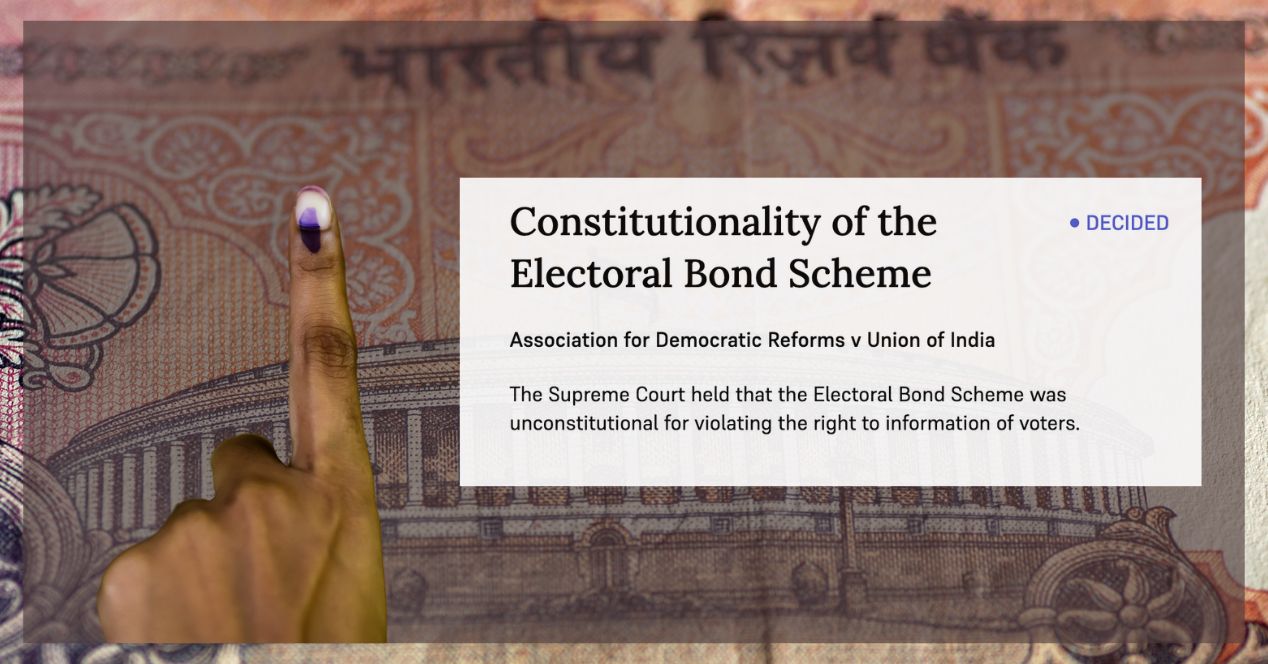Analysis
What is the Form 17C petition in the Supreme Court all about?
Last week, the Court adjourned a request asking the ECI to publish turnout data within 48 hours of polling. Here’s an explainer
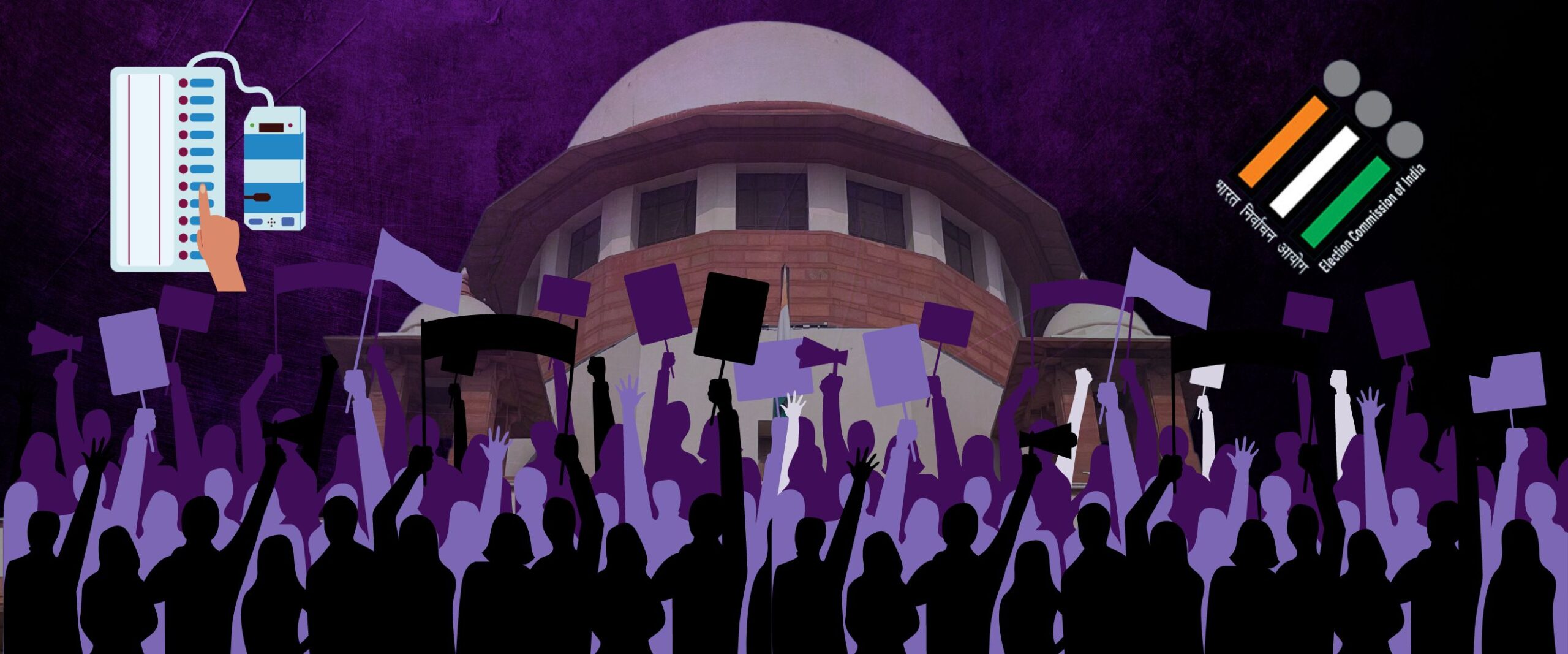
On 24 May 2024, a Vacation Bench of Justices Dipankar Datta and S.C. Sharma adjourned hearing an application that raised a question about discrepancy in voter turnout figures. Particularly, the question was about Form 17C, which is meant to be filled up by a government employee called the Presiding Officer on the day of polling. Form 17C records the voter turnout in every polling station of a constituency. In all, there are approximately 12 lakh polling stations in India.
The application was filed by the Association for Democratic Reforms (ADR), a civil society organisation that had previously challenged the Electoral Bond Scheme (successfully) and also requested 100 percent Voter Verified Paper Audit Trail verification (unsuccessfully) in the Supreme Court. In the present matter, ADR was seeking a direction to mandate the Election Commission of India (ECI) to publish true copies of Form 17C on its website within 48 hours of the completion of polling.
Concerns raised by the Opposition and ADR’s application
On 3 May 2024, the Communist Party of India (Marxist) wrote a letter to the Chief Election Commissioner (CEC) seeking an explanation for the delay in releasing voter turnout figures for the first and second phases of the 2024 Lok Sabha Election.
The letter came days after the ECI provided the final voter turnout report of the first phase 11 days after polling concluded. CPI’s letter stated that the final voter turnout was six percent higher compared to the initial figures provided on the day of polling.
Three days later, the All India Trinamool Congress (TMC) wrote a letter to the CEC requesting a “precise voter turnout,” as the figures released by the ECI were in percentage form. TMC described it as a “paradigm shift” as reports from preceding elections had conveyed turnout information in absolute numbers.
On the same day, Mallikarjun Kharge, President of the Indian National Congress , wrote a letter to the Indian National Developmental Inclusive Alliance, popularly known as the INDIA alliance, leaders, stating, “In my electoral life of 52 years, I have never witnessed such a huge increment of voting percentages in the final published data.” Kharge’s letter referred to Form 17C. If the information is available, asked Kharge, what was precluding the ECI from publishing it expeditiously.
Three days later, ADR approached the Supreme Court seeking the publication of Form 17C on the ECI website within 48 hours of polling. ADR suggested that such a move would efface public suspicion surrounding the electoral process. On 24 May 2024, the top court adjourned the hearing until July 2024, after the Supreme Court’s summer break. The results of the General Election will be announced on 4 June.
ADR’s petition was an interim application within existing writs filed by TMC politician Mahua Moitra and ADR. An interim application is filed seeking temporary relief until the matter is fully decided. Moitra’s petition was related to the 2019 Lok Sabha Election where the absolute number of votes were released after the election results. Moitra’s petition had asked the top court to direct the ECI to publish Form 17C within 48 hours of any subsequent parliamentary and assembly election. ADR had filed its own petition in November 2019.
What is Form 17C and what is ADR’s ask?
Form 17C is included in the Conduct of Election Rules, 1961 (Election Rules). It is divided into two parts.
- Part 1 details the total amount of votes recorded on the day of polling, among other details.
- Part 2 breaks down the number of votes for each candidate to record the election results.
Form 17C Part 1 is filled out by a Presiding Officer according to the procedure under Rule 49S of the Election Rules. A copy of it is provided to the polling agent of a candidate. The polling agent and the Presiding Officer have to sign this form, which is then stored in a separate cover in a ‘Strong Room’.
The voter turnout for the first and second phase were released by the ECI at 7pm on 19 April and 26 April, respectively. However, on 30 April, the ECI released a final voter turnout for both phases which, according to ADR, did not match with the initial figures. They stated that there was a discrepancy of five to six percent—a concern also raised by Opposition parties. Further, the ADR application also noted that the final turnout was provided in percentages and not in absolute numbers.
Form 17C Part 2 comes into the picture at the time of announcing the results and contains a detailed list of the total number of votes received by each candidate. It is filled out by a Returning Officer, the person in charge of overseeing the election. The candidate-wise count is recorded by pressing the button marked ‘Result’ on the Control Unit of the Electronic Voting Machine (EVM). It has to be signed by the Returning Officer, the counting supervisor and the candidates or their agents.
ADR has demanded that Part 2 should also be uploaded on the ECI website to allow citizens to cross-check the number of votes recorded in Part 1.
ECI’s response and what happened in the Supreme Court
In last week’s hearing, Senior Advocate Maninder Singh, appearing for the ECI, stated that ADR had continuously attempted to undermine the electoral process by filing petitions in the Supreme Court. In its affidavit, the ECI described ADR’s petition as a mala fide attempt to create an atmosphere of suspicion among voters by making “untrue and false allegations.”
Singh referred to the VVPAT judgement, where the top court rejected 100 percent verification of votes cast in EVMs with VVPAT slips. ADR was the petitioner in that case as well. In that judgement, Justice Dipankar Datta cast doubts on the “bona fides of the petitioning association” and noted that petitions based on “suspicions and conjectures” should be discouraged.
In the present case, the ECI contended that the turnout figures released on the day of polling are tentative and cannot be treated as final. Singh argued that the “five to six percent” discrepancy claim by ADR was “absolutely false”, stating that the difference was of “only one to two percent.” The ECI claimed that ADR was relying on a press release issued by it, which clearly stated that the “tentative” turnout of voters was “over 60%” and that the percentage was “likely to go upwards” as voting in some constituencies was yet to conclude.
Further, the ECI argued that the Election Rules only mandate sharing Form 17C data with the polling agent of a candidate and nobody else. “The petitioner is trying to create an entitlement when none exists in law,” the ECI’s affidavit states. Singh also argued that the VVPAT judgement already dealt with Form 17C, so there was no need to consider the existing petition.
Senior Advocate Dushyant Dave, appearing for ADR, contended that the petition was not adversarial but a means to “strengthen the election process.” Dave stated that he was “surprised and pained” that the ECI decided to “damn” ADR in open court. Senior Advocate Abhishek Manu Singhvi, appearing for Moitra, stated that it would be a travesty to suggest that the Form 17C issue was decided in the VVPAT judgement.
Justice Datta clarified that the Form 17C issue was not covered in the VVPAT judgement, but he had other concerns. He pointed out that the demand for publishing Form 17C copies within 48 hours was also sought by Moitra in 2019—allowing ADR’s prayer would effectively grant the same relief sought by Moitra in her writ petition. While adjourning the matter to be heard after the court vacation, he stated that deciding on ADR’s prayer would require more “manpower” and that five phases of the election had concluded in any case.
On 25 May 2024, a day after the ECI vehemently objected to the petition in the Supreme Court, it released absolute numbers of votes recorded in the first five phases of the election. “Commission notes the pattern of false narratives and mischievous design to vitiate electoral process,” the press release stated. “Any alteration in the number of votes polled is not possible.”

